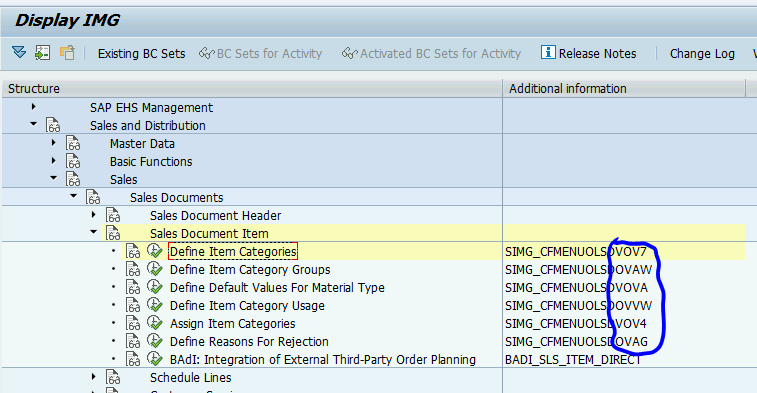I want to read the customizing path of an IMG-Activity in SAP via Code (abap). I have the IMG-Activity from e071K, which stores objects within a transport job. Now I found the table TNODEIMG where the tree structure of SPRO is stored. This is perfect, because it holds what I need. But I can't find the connection to my IMG-Activity. The Unique-Id in TNODEIMG is in other format and seems to be a different Id. Someone got an idea how I can read this out?
UPDATE:
@vwegert: Thank you for you helpful answer. So far I get this list filled with Node-Id's: lt_eref_list, but don't get the parents. Do you see some missunderstood or failure here?
DATA: lt_iref_list TYPE STANDARD TABLE OF hier_ref,
lt_eref_list TYPE STANDARD TABLE OF hier_ref,
ls_ref TYPE hier_ref,
lt_parent_list TYPE STANDARD TABLE OF hier_iface,
lt_check_list TYPE STANDARD TABLE OF hier_iface.
ls_ref-node_id = 'SIMG_CFMENUOLQSOQ46'.
APPEND ls_ref TO lt_iref_list.
CALL FUNCTION 'STREE_GET_NODES_FOR_GIVEN_REF'
TABLES
i_list_of_references = lt_iref_list
e_list_of_references = lt_eref_list.
LOOP AT lt_eref_list ASSIGNING FIELD-SYMBOL(<ls_ref>).
CALL FUNCTION 'STREE_GET_PARENTS_OF_NODE'
EXPORTING
structure_id = <ls_ref>-node_id
* IMPORTING
* message = ls_message
TABLES
check_nodes = lt_check_list
parent_nodes = lt_parent_list.
ENDLOOP.
Thank you in advance.


